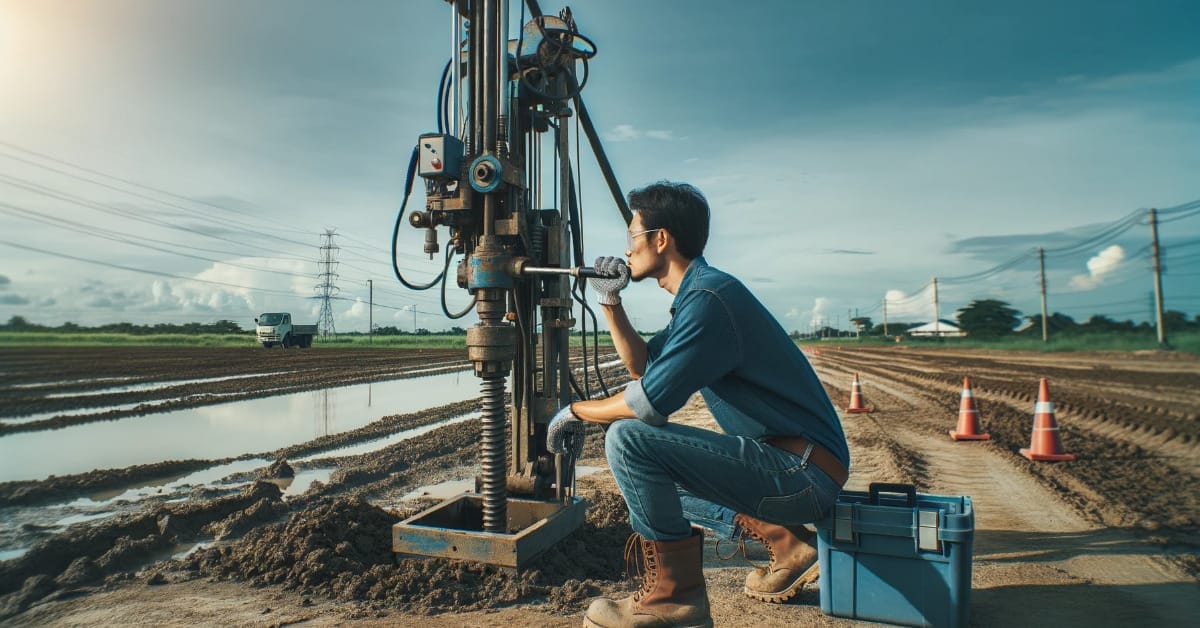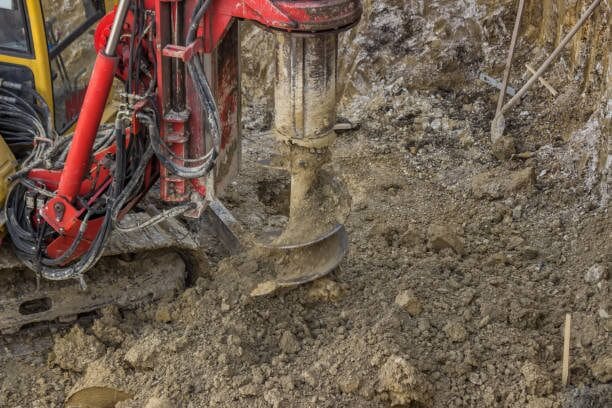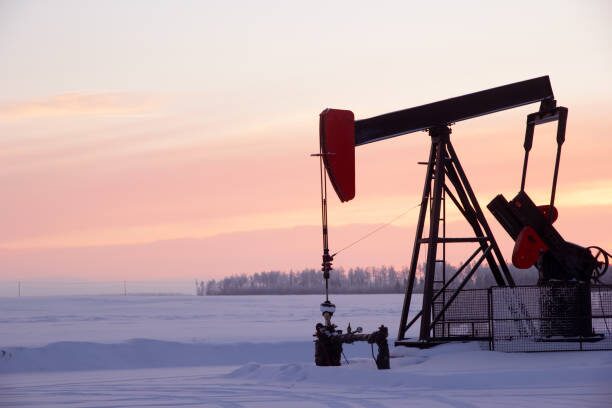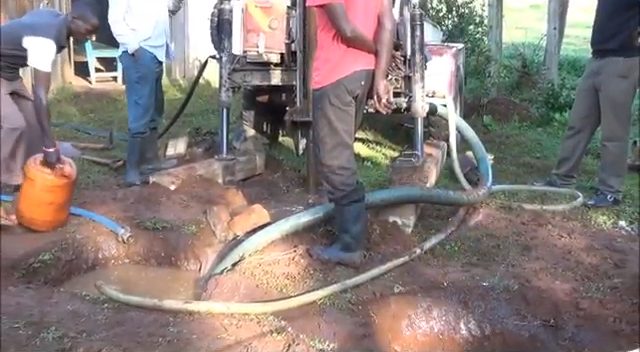How Long Does it Take to Drill a Well? (Guide)

Hey everyone! Let’s talk about drilling wells. Through my hands-on experience working with various drilling companies, I’ve got the inside scoop on how long it takes to drill a well. It’s not just about firing up a rig and going to town – much more goes into it.
In most cases, under what we call ‘normal conditions’, drilling a well is a 1 to 3-day job. But let’s not forget about Mother Nature and what’s under our feet. Things can slow down if the skies open with heavy rain or we hit some tough, rocky soil.
But don’t worry; by the end of this guide, you’ll have a clear picture of what it takes to drill a well, along with some handy tips from the field.
Practical Guide to Well-Drilling Timelines

In my experience working on drilling sites, a typical well drilling job can take anywhere from 1 to 3 days under normal conditions.
However, external factors like weather and soil composition can extend this timeframe. For instance, heavy rain or rocky terrain often slow the drilling process.
For standard 100 ft. wells, it usually takes about 1 to 2 days to drill under favorable conditions. But this can take longer if you encounter challenging weather or difficult ground conditions.
When drilling a water well to completion with traditional methods, the process can vary between 14 to 25 days. The duration depends on various on-site challenges that might arise during the project.
Drilling boreholes is slightly longer, typically taking about 10 to 15 days. This includes the initial drilling, subsequent tasks such as cable and pipework, and water testing and analysis.
Modern drilling equipment can significantly expedite the drilling process. On a productive day, these advanced drills can achieve an excavation rate of 50 to 60 feet and sometimes even up to 200 feet per day, effectively combining drilling and concrete lining.
Drilling a well is subject to various influencing factors. Understanding these can help in effectively planning and executing a drilling project.
Timing It Right: Why Winter is Prime for Well Drilling

When picking the best season for drilling a well, my favorite is winter. I know what you’re thinking: “Isn’t the ground too hard when frozen?” But here’s the real deal from someone who’s been there, drill in hand – winter makes for smoother drilling.
In the colder months, the ground is firmer, and there’s way less mud to contend with. This means a cleaner worksite and less yard damage. I’ve maneuvered rigs across frosty terrains, and the difference is clear – the hardened ground keeps those tire tracks light and the mess minimal.
Another insider tip? Most drilling companies hit their peak busy season in summer and spring. I’ve noticed that when you line up a drilling job in winter, there’s a good chance you’ll get quicker responses and potentially faster service. It’s like having the fast lane all to yourself when everyone else is stuck in traffic.
So, if you’re planning a drilling project, don’t overlook winter. It might just be your ticket to a smoother, quicker drilling experience.
Nailing the Basics: Smart Steps for Drilling a New Well

When drilling a new well, choosing the right spot is crucial. Over the years, I’ve seen how a well-placed well can make all the difference. Here’s the lowdown on setting it up right:
- Watch Out for Contaminants: Keep your well at least 50 feet away from septic tanks and sewers. Think of it as steering clear of potential trouble spots.
- Mind Your Farm Structures: Silos need a berth too. Set up your well at least 25 feet away from them.
- Distance from Waste Systems: Make it a rule of thumb to place your well 100 feet away from cesspools, on-lot sewage systems, barnyards, and pastures. This distance helps in keeping your water clean and safe.
- Avoid Shallow Groundwater Zones: Steer clear of areas where groundwater is close to the surface, like within 10 feet. It’s about avoiding risks that are too close for comfort.
Drilling a well is all about smart planning and being prepared for the variables. With the right location and patience for the drilling process, you’re setting yourself up for a successful well that’ll serve you for years.
Comparative Analysis: Traditional vs. Modern Drilling Techniques
Let’s dive into a comparative analysis of traditional versus modern drilling techniques, focusing on how they differ and impact the timeline.
This comparison should give you a clearer idea of the advancements in the drilling field.
| Aspect | Traditional Drilling Techniques | Modern Drilling Techniques |
|---|---|---|
| Overview | Traditional methods are more manual and rely on simpler machinery. | Modern methods utilize advanced technology and automated machinery for efficiency. |
| Time Efficiency | Generally, it is slower due to manual processes and simpler equipment. | Significantly faster due to automation and advanced technology. |
| Accuracy | Less accurate, often requiring adjustments and corrections. | Highly accurate, with precision equipment and GPS-guided systems. |
| Environmental Impact | Potentially greater impact due to less precise methods and longer operation times. | Reduced impact due to precision, efficiency, and newer, eco-friendlier technologies. |
| Cost | Initially lower, but may increase due to longer timelines and potential for errors. | Higher initial investment, but often more cost-effective in the long run due to efficiency. |
| Safety | Higher risk due to manual operation and less advanced safety measures. | Safer due to automated processes and advanced safety protocols. |
| Flexibility | Limited flexibility in dealing with different ground conditions and unexpected obstacles. | Highly adaptable, with equipment capable of handling a variety of ground conditions effectively. |
| Maintenance | Maintenance can be more frequent and challenging due to older equipment. | Easier and less frequent maintenance due to modern, durable equipment and diagnostic systems. |
| Skill Requirement | Requires skilled labor familiar with traditional techniques and manual handling. | Requires operators skilled in technology and machinery management. |
| Application Range | Suitable for smaller projects or in areas where modern machinery is not feasible. | It is ideal for large-scale projects and diverse environments, offering broader application possibilities. |
While traditional methods have their place, modern techniques bring efficiency, safety, and environmental benefits that are hard to overlook. The choice between these methods often depends on the project scale, budget, and environmental considerations.
Frequently Asked Questions
- How Does Soil Type Impact Drilling?
- Soil type is crucial. Rocky or hard soil types can make drilling more challenging and time-consuming than softer soil.
- Can I Drill a Well Anywhere on My Property?
- Not always. It would be best to consider local regulations, environmental impact, and practical aspects like accessibility and safety.
- What Maintenance Is Required After Drilling a Well?
- Post-drilling, regular maintenance includes checking the pump system, cleaning, and testing water quality to ensure the well remains in good condition.
- Is It Possible to Predict Water Quality Before Drilling?
- While predicting exact water quality before drilling is challenging, you can get a good idea based on local water tables and nearby water sources. Testing neighboring wells can also provide insights.
- How Often Should I Test My Well Water?
- Testing your well water at least once a year for contaminants like bacteria, nitrates, and pH levels is recommended. More frequent testing may be necessary if the area has known issues.
- What Happens If I Hit Rock While Drilling?
- Hitting rock during drilling can slow down the process and increase costs. Specialized drilling equipment may be needed to penetrate through rock layers.
- What Are the Key Maintenance Tasks for a Well?
- Key maintenance tasks include regular cleaning, ensuring the integrity of the well casing, checking the pump system, and monitoring water quality to detect any issues early.
References
Organizations:
- National Ground Water Association (NGWA). https://www.ngwa.org/
- International Association of Hydrogeologists (IAH). https://iah.org/
Books:
- “Groundwater and Wells” by Fletcher G. Driscoll. https://www.abebooks.com/book-search/title/groundwater-wells/author/fletcher-driscoll/
- “Applied Drilling Engineering” by Adam T. Bourgoyne et al. https://www.abebooks.com/book-search/title/applied-drilling-engineering/author/adam-bourgoyne/
Website Resources:
- The Water Systems Council (WSC). https://www.watersystemscouncil.org/about-wsc/
- Drillers.com. https://drillers.com/
Video References:
SUNMOY Water Drilling rig
